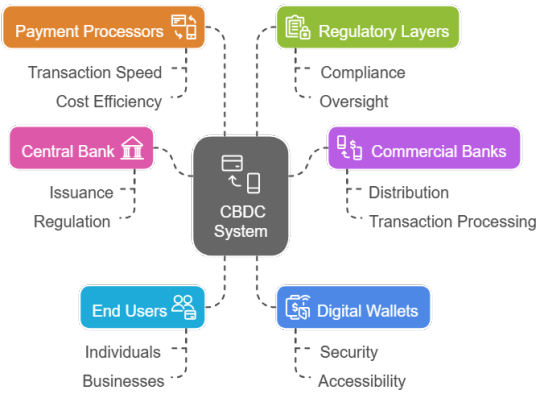#Automation (incl. ML‑driven
Explore tagged Tumblr posts
Text
CBDC technology partner India

As CBDCs become a global reality, Prodevans equips banks with everything needed to enter the digital currency ecosystem. We provide full-spectrum CBDC implementation — including compliant architecture, token management, real-time reconciliation, secure wallet enablement, and 24/7 L1/L2 support. Trusted for our role in India’s national rollout, we help institutions go beyond pilots to scalable, production-ready platforms ensuring seamless end- user readiness. Our services ensure central bank compliance while delivering performance, observability, and rapid response to evolving regulatory needs. Whether you’re in the pilot phase or preparing for production rollout, Prodevans supports your CBDC journey at every step.
OUR ADDRESS
403, 4TH FLOOR, SAKET CALLIPOLIS, Rainbow Drive, Sarjapur Road, Varthurhobli East Taluk, Doddakannelli, Bengaluru Karnataka 560035
OUR CONTACTS
+91 97044 56015
#CBDC (Central Bank Digital Currency)#Cloud Computing & Cloud Services#Application Modernization#360° Monitoring (Server#Application#Database & Virtualization Monitoring)#Identity & Access Management (IAM)#Automation (incl. ML‑driven#Ansible#network/cloud automation)#DevOps Tools & Support#Infrastructure Management (IaaS/PaaS/SaaS#orchestration#orchestration tools)
0 notes
Text
Leveraging Mobile Applications to Enhance Customer Engagement and Foster Brand Loyalty in the Digital Age

In today’s hyper-connected world, mobile applications have become indispensable tools for businesses looking to engage their customers effectively. With billions of smartphone users worldwide, apps offer an unparalleled opportunity to connect with audiences, deliver personalized experiences, and build lasting relationships. This article explores how businesses can leverage mobile applications to enhance customer engagement and foster brand loyalty, along with actionable strategies for achieving success in the digital age.
The Importance of Mobile Applications in Customer Engagement
Mobile applications are no longer mere add-ons for businesses; they are central to the customer journey. They offer a direct channel to users, enabling seamless communication, quick access to services, and tailored experiences. Key reasons for their importance include:
Ubiquity of Smartphones: With over 6.8 billion smartphone users globally, mobile apps offer businesses a vast audience to engage with.
Personalization Opportunities: Apps provide a platform for delivering highly personalized content, offers, and recommendations based on user behavior and preferences.
Enhanced Accessibility: Mobile apps allow customers to interact with a brand anytime and anywhere, breaking the barriers of time and location.
Data-Driven Insights: Apps enable businesses to collect valuable data on user behavior, which can be analyzed to refine marketing strategies and improve offerings.
Customer Retention: Engaging app experiences can significantly boost customer loyalty, reducing churn rates and increasing lifetime value.
Strategies for Leveraging Mobile Applications
To maximize the potential of mobile apps, businesses need to adopt targeted strategies that prioritize user experience, engagement, and value. Below are some actionable approaches:
1. Focus on User-Centric Design
The success of a mobile app hinges on its usability and design. A user-centric approach ensures that the app is intuitive, visually appealing, and easy to navigate. Key design principles include:
Simplicity: Minimize complexity to make the app easy to use.
Responsive Design: Ensure compatibility with various devices and screen sizes.
Accessibility: Incorporate features that cater to users with disabilities.
2. Incorporate Gamification
Gamification involves adding game-like elements to apps, such as rewards, leaderboards, and challenges. These features encourage users to interact more frequently and can enhance customer loyalty. For example:
Fitness apps like Strava motivate users with challenges and achievements.
Retail apps like Starbucks use reward points to incentivize purchases.
3. Leverage Push Notifications
Push notifications are a powerful tool for re-engaging users. However, they must be used strategically to avoid being intrusive. Best practices include:
Sending personalized messages based on user behavior.
Timing notifications to match user activity patterns.
Offering value, such as discounts or updates, in every message.
4. Integrate AI and Machine Learning
Artificial intelligence (AI) and machine learning (ML) can enhance mobile app functionality by:
Personalizing recommendations and content.
Predicting user needs based on past interactions.
Automating customer support through chatbots.
5. Build a Community Around the App
Apps that foster a sense of community can drive engagement and loyalty. Features such as forums, social sharing, and user-generated content allow users to connect with each other and with the brand. Examples include:
Peloton’s fitness app, which connects users through live classes and leaderboards.
Duolingo’s language-learning app, which incorporates social challenges and streaks.
6. Ensure Data Privacy and Security
In the digital age, customers are increasingly concerned about their data privacy. Businesses must prioritize security to build trust. Strategies include:
Implementing robust encryption and authentication protocols.
Clearly communicating data usage policies.
Allowing users to control their privacy settings.
7. Optimize for Performance
A slow or glitchy app can drive users away. Regular updates, performance monitoring, and user feedback can help ensure that the app runs smoothly. Additionally, features like offline mode can enhance usability.
8. Measure and Analyze Engagement Metrics
Continuous improvement requires tracking key metrics, such as:
Daily and Monthly Active Users (DAU/MAU): Indicators of user retention.
Session Duration: A measure of how engaging the app is.
Churn Rate: The percentage of users who stop using the app.
Customer Lifetime Value (CLV): The total revenue a customer generates.
Case Studies: Successful Mobile App Engagement
1. Nike Training Club
Nike’s fitness app has successfully engaged users by offering free workout programs, personalized recommendations, and gamified challenges. The app’s seamless integration with Nike’s e-commerce platform further enhances the user experience.
2. Sephora
Sephora’s app blends online and offline shopping experiences with features like virtual try-ons, personalized recommendations, and a loyalty program. These features have significantly boosted customer engagement and sales.
3. Spotify
Spotify leverages AI to deliver personalized playlists and recommendations. Features like collaborative playlists and social sharing further enhance user engagement.
Challenges and Considerations
While mobile apps offer immense potential, businesses must navigate several challenges, including:
High Development Costs: Building and maintaining a high-quality app requires significant investment.
Competition: With millions of apps available, standing out is a constant challenge.
User Fatigue: Overloading users with notifications or ads can lead to disengagement.
Conclusion
Mobile applications have transformed the way businesses engage with customers, offering a powerful platform for delivering value, personalization, and convenience. By focusing on user-centric design, leveraging advanced technologies, and prioritizing data security, businesses can create apps that not only engage customers but also foster long-term loyalty. As the digital landscape continues to evolve, mobile apps will remain a cornerstone of successful customer engagement strategies, enabling brands to thrive in an increasingly competitive market.
0 notes